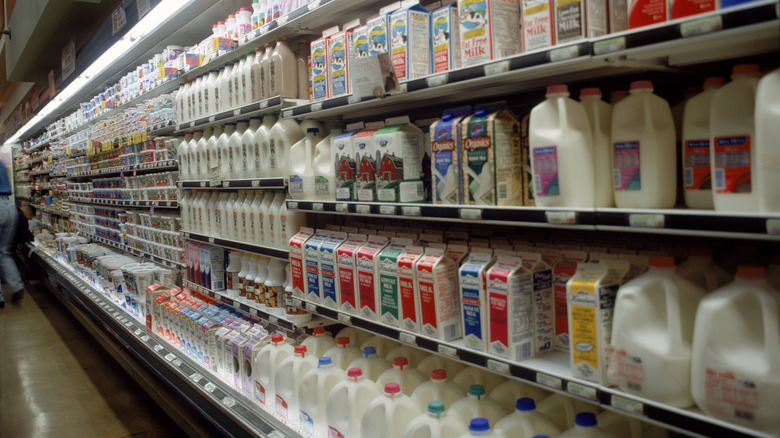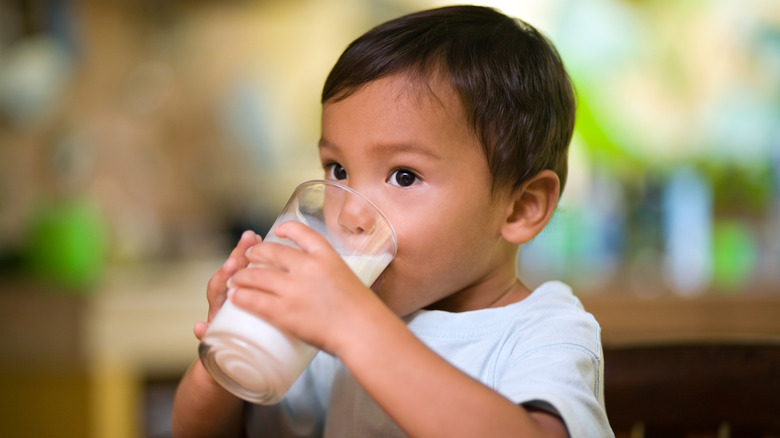Milk Doesn't Naturally Have Vitamin D—So Why Is It In There?
In the States, we grow up being taught that milk is an important source of vitamin D. From infancy into adulthood, most of us have considered it to be a nutritious drink. Imagine my surprise when I found out it was all a lie! Okay, it is actually a healthy drink — but it's also fortified with vitamin D.
That's right — milk doesn't naturally contain this vital nutrient. Adding vitamin D to milk was part of a public health campaign in the 1930s, a time when the United States faced a growing crisis. Children were developing rickets (a bone disease caused by vitamin D deficiency) in alarming numbers. This was due to poor diets and reduced exposure to sunlight as industrialization shifted lifestyles indoors.
Public health officials decided that a simple solution would be to fortify milk, a product you could find in nearly every household. People drank it alone, added it to breakfast cereals, mixed it with coffee, and consumed it in a variety of other ways. Milk became the delivery system for this essential nutrient, dramatically reducing rickets cases nationwide.
The choice wasn't just some random idea — it was calculated. Milk was affordable, widely consumed, and already considered nutritious. It was an ingenious strategy to combine this move with education campaigns, effectively reshaping public health. The project both addressed a nutritional deficiency and set a precedent for food fortification programs worldwide. Nowadays, milk's reputation as a source of vitamin D is so ingrained in our culture that many assume it's natural.
How a pandemic sparked a nutritional revolution
In the early 20th century, a silent pandemic of rickets swept through American communities, crippling children and alarming health professionals. Rickets causes bones to weaken and deform, leaving children with bowed legs and severe pain. The root cause? A vitamin D deficiency.
At the time, children had begun to spend less time outdoors due to urbanization and industrialization which deprived them of sunlight, the body's then-primary source of vitamin D. Add poor diets to the mix and the deficiency became widespread. The solution came during the Great Depression, when public health experts sought cost-effective ways to address this growing epidemic. Milk was already a dietary staple for families and officials decided this would be the best option to turn into a fortified product.
By the 1930s, milk enhanced with vitamin D became a household standard, leading to a dramatic decline in rickets cases within a decade. This breakthrough wiped out rickets in many parts of the country and influenced global public health strategies. The campaign turned a glass of milk from a basic beverage into a lifeline for millions of children.
What's in your glass today?
The answer to that question depends on where you live, because not all countries have public health policies that mandate vitamin D fortification in their milk products. In the United States, Canada, Sweden, and Finland, it's a non-negotiable. But in the European Union, Asia, and Africa, it's voluntary and not necessarily widely practiced.
Vitamin D is added to milk during processing to make sure it gets evenly distributed and is as effective as possible. Dairy facilities use vitamin D3, which is dissolved in a carrier solution like oil to help it blend smoothly. During pasteurization or homogenization, the vitamin D solution is mixed into the milk. Afterward, the milk is tested to ensure it contains the right amount of vitamin D before it's packaged and labeled.
If you are Stateside, most store-bought milk is fortified with vitamin D, whether it's refrigerated or shelf-stable. But the nutrient is now found in a variety of other foods, including orange juice, breakfast cereals, and plant-based milk alternatives like almond milk. These options reflect changing dietary trends as more people explore non-dairy lifestyles. Even with this shift, milk still remains one of the most reliable ways to meet your daily vitamin D needs.


